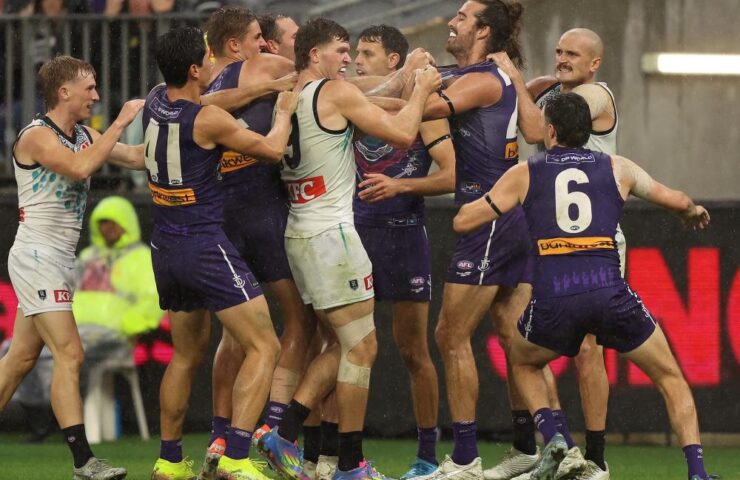
From the Pocket: AFL players are taught to dominate their
Three of the very best marks I’ve ever seen on a footy field were from players sprinting back with the flight of the ball. If I was trying to describe the appeal of the sport to someone who had actually never seen it, I ‘d show them the marks of Mark Harvey, Nick Riewoldt and Jonathan Brown. However why? I ‘d most likely mumble something about courage and dedication and any of the other cliches pitched by coaches and commentators. The reality is there is something visceral about an imitate that, a sort of car crash fascination that gets us out of our seats a lot more than a screamer or a close game.It’s a young man’s act. Boy will do silly things under orders and out of worry of shame. Among the very first things you discover about older footballers, at least when the prefrontal cortex completely develops, is the different way they assess danger. Even Harvey, as negligent and as brave a footballer to play the game, had a measure of restraint and self-preservation in his later years.Advertisement It’s worth remembering who these males played under. Harvey was a Kevin Sheedy player through and through. Leigh Matthews later told Brown,”Strength is keeping your eyes on the ball when you don’t know where the pressure is coming from– you dominated your fear “. Riewoldt played under Grant Thomas, who now brings his distinct joie de vivre to the Twittersphere, but who as a coach would rewind videotapes and stop briefly on players who had actually taken out of a contest.Writing about this for The Age, previous Hawthorn forward Tim Boyle priced estimate among Riewoldt’s colleagues, Matt Maguire.
“You needed to be courageous, “Maguire said.”How you played was a reflection of who you were as an individual. If you went hard for the ball and didn’t deviate you were a trustworthy, trustworthy person. If you didn’t, you felt that you weren’t.”On the weekend, Darcy Byrne-Jones most likely had one thought in his head–“
got ta go “. It was pouring rain, his Port Adelaide teammate had overcooked the kick and the protector turned forward ran blindly into Alex Pearce. In handing the Fremantle captain a three-week suspension, the AFL looked for to tighten the parameters around task of care. To the rest of the competition and to footballers of all abilities, ages, and genders, they were stating,”you have to approach a contest differently to what you have in the past”. We required this to be checked at the tribunal. And tossing the case out was the ideal decision. There is really little more that Pearce might have done. It was a good example of how challenging it is for players to exercise their duty of care, and the futility of attorneys nicely summing up football incidents and legislating change.Advertisement A better method to avoid these occurrences would be to crack down on what Byrne-Jones did. I’m not suggesting he was in any way culpable. The bad bugger did what every junior footballer has been
taught and encouraged to do for decades, and he was rewarded with a bout of concussion. However by running back with the flight of the ball, he put Pearce and more significantly, himself, in an impossible position. We have actually moved well beyond the days of Gary Ablett Sr slaughtering John Gastev. In 1.7 seconds, Pearce had to factor in a range of variables– a damp ball, an errant kick, a captain’s duty to lead by example and an approximation of”duty of care”that is practically impossible to define, let alone fulfil.All this taken place in the background of an interview from former Adelaide and Collingwood player Paul Seedsman on the ABC. The 33-year-old compared his continuous concussion symptoms to that of having a stroke. Some days he can’t raise his limbs or rise. It deserves keeping in mind interviews like that each time the AFL cracks down on hazardous acts and we shake our fists and regret a game gone woke.Acts we have actually valorised for decades now need to be umpired out of the game. As the criteria tighten around head-high takes on and bumps, footballers have changed their techniques, their footwork, the way they gird their torsos, and the method they process danger. The next action would be that the person running at the ball deserves to that space, instead of the individual running back with the flight. It would require a rule modification and a shift from individuals who play, umpire, coach, commentate and support the game. It would make the sport less gladiatorial. But in result, just like the AFL’s concussion panel, it would be conserving the players from themselves.
